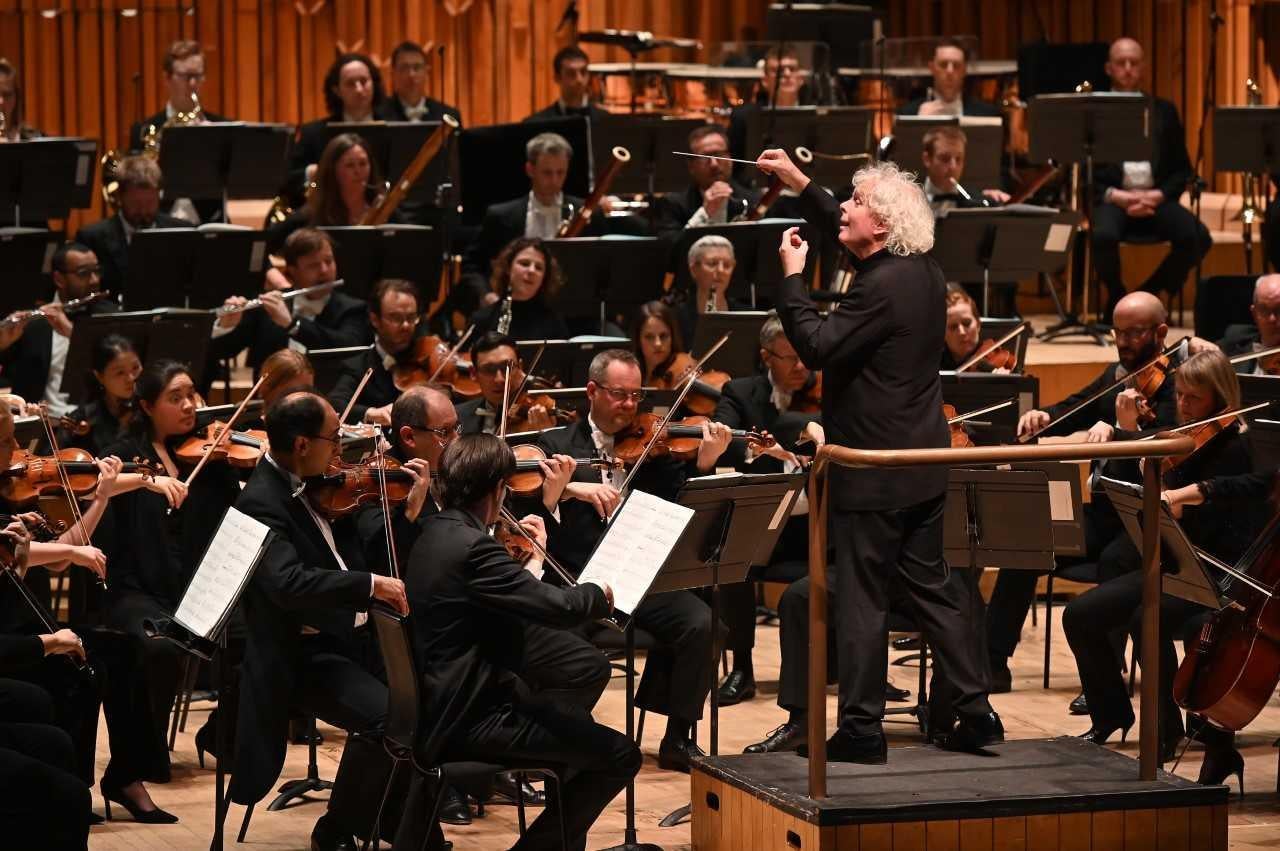Simon Rattle and the London Symphony Orchestra, review: Stravinsky performance is an exhilarating affirmation of life
Work composed ten years after the publication of Schoenberg’s ‘Harmonielehre’, which is also performed, gives the audience definitive proof that tonality was then, and still is now, anything but dead

Your support helps us to tell the story
From reproductive rights to climate change to Big Tech, The Independent is on the ground when the story is developing. Whether it's investigating the financials of Elon Musk's pro-Trump PAC or producing our latest documentary, 'The A Word', which shines a light on the American women fighting for reproductive rights, we know how important it is to parse out the facts from the messaging.
At such a critical moment in US history, we need reporters on the ground. Your donation allows us to keep sending journalists to speak to both sides of the story.
The Independent is trusted by Americans across the entire political spectrum. And unlike many other quality news outlets, we choose not to lock Americans out of our reporting and analysis with paywalls. We believe quality journalism should be available to everyone, paid for by those who can afford it.
Your support makes all the difference.As a deity whose acolytes believed he had pulled down the palace of traditional tonality, Arnold Schoenberg invited iconoclasm. The only surprise is that the response took so long to materialise. And when it did – 70 years after the publication of Schoenberg’s massive credo Harmonielehre (“Theory of Harmony”) – it was John Adams and his acolytes who sought to push him off his pedestal.
Adams explains that he was rebelling against “something twisted and contorted” in Schoenberg’s work. Despite his respect for Schoenberg’s persona, he “profoundly disliked” his music and felt impelled to “free himself” from the “aural ugliness” it promoted. Hence his own Harmonielehre, which he describes as a parody “without the intent to ridicule”.
The London Symphony Orchestra under Simon Rattle’s direction give this three-movement work everything they’ve got, but as a piece of music, rather than a polemical statement, it’s no masterpiece. Adams has never been more than a journeyman composer, and this work is par for the course: a noisy, exuberant, and adroitly orchestrated piece of minimalism, but vacuous through and through.
Harrison Birtwistle’s The Shadow of Night, still ringing in our ears from before the interval, was composed 16 years after Adams’s Harmonielehre, and it points up the triteness of Adams’s judgment.
Birtwistle describes it as “a slow and reflective nocturne, exploring the world of melancholy as understood and celebrated by Elizabethan poets and composers”, and that’s very much how it comes over. It’s not a “tonal” work, and is exceptionally intricate, but at the same time it’s intensely expressive. Muted tubas and trombones, plus double basses creating a soft heartbeat, provide a carpet of sound over which a solo piccolo and later a solo oboe burst into acidulated song; the composer’s own simile – “like the moon shining through a series of slowly passing clouds” – is apt.
But it’s when Rattle and the LSO deliver Stravinsky’s Symphonies of Wind Instruments – composed ten years after the publication of Schoenberg’s Harmonielehre – that we get definitive proof that tonality was then, and still is now, anything but dead. With its wheeling figurations and jabbing interjections, this “austere ritual” (as Stravinsky described it) seems hewn out of living rock. It was composed as a memorial to Debussy, but here its po-faced playfulness comes over as an exhilarating affirmation of life.
Join our commenting forum
Join thought-provoking conversations, follow other Independent readers and see their replies
Comments